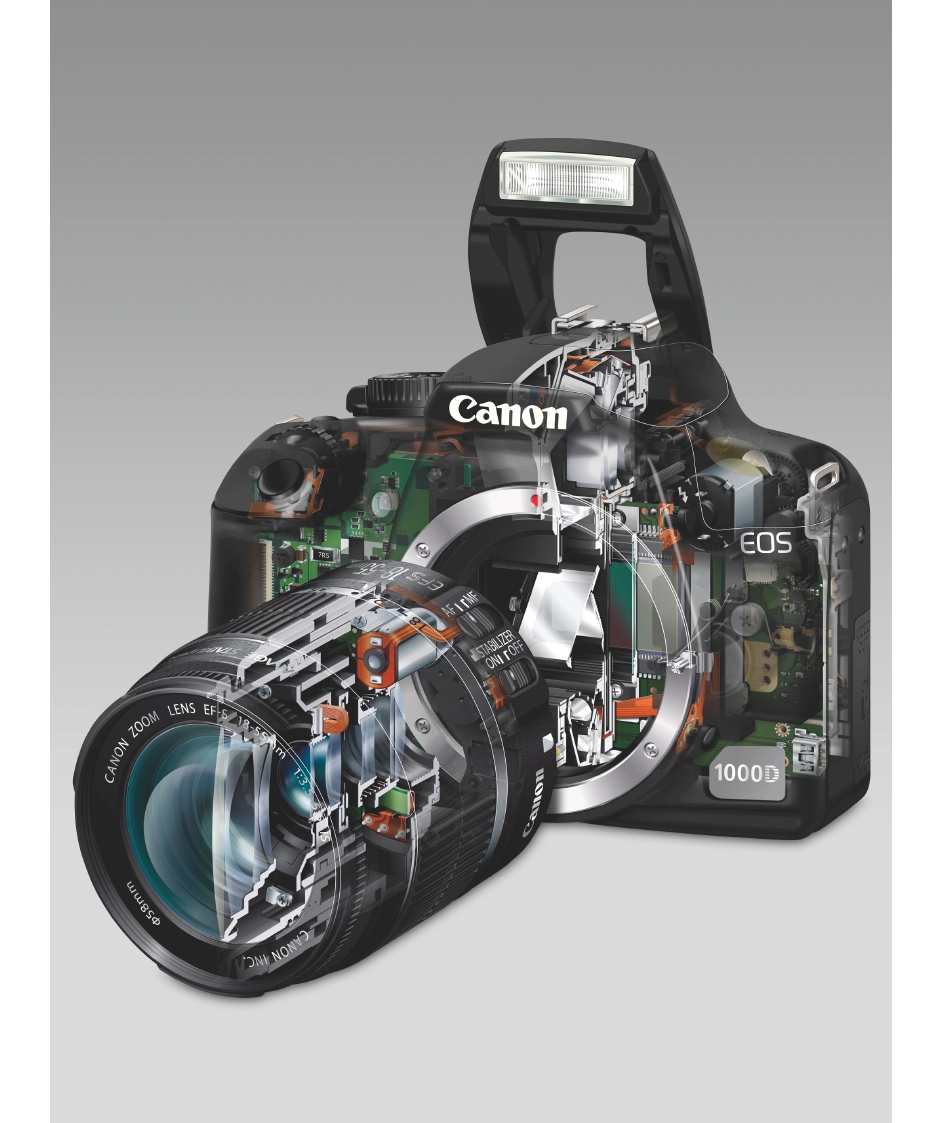Inside a DSLR camera

[fototag id=”insideadslr”]
The dawn of the digital format has revolutionised the imaging industry and in turn the way we work our cameras. Furthermore the internal DNA of the camera body has been entirely restructured to make way for the new electrical system; or has it?
In fact film and digital cameras operate in a similar manner. Varying the size of the lens’s diaphragm (aperture) in tandem with the amount of time the shutter is open, focusing light on to the image detection material, the only difference being that this is now received in an electrical rather than chemical form.
A DSLR (digital single-lens refl ex) camera employs a mechanical mirror system that directs the light travelling through the attached lens upwards at a 90 degree angle allowing the photographer to compose the shot through the viewfinder. As the shutter button is pressed the exposure takes place: the mirror swings out of the way and the shutter opens allowing the lens to project the light on to the image sensor. In low light scenarios the shutter will need to stay open for a longer period of time for the image to be recorded, this is why photographers support their cameras with tripods as the smallest degree of camera shake will disturb the quality.
The sensor is formed of millions of pixels laid out in thousands of rows and columns: the more pixels or dots of light, the higher the megapixel count and in theory the higher the resolution. The light travels through a colour filter above the individual sensors and is converted from light waves into an analogue signal which is then processed through a digital convertor. Next the conversion is fine tuned through a series of filters that adjust aspects such as white balance and colour. The resulting image can be made into a JPEG by compressing the file size and discarding unnecessary pixels. The final image is shown on the LCD.





